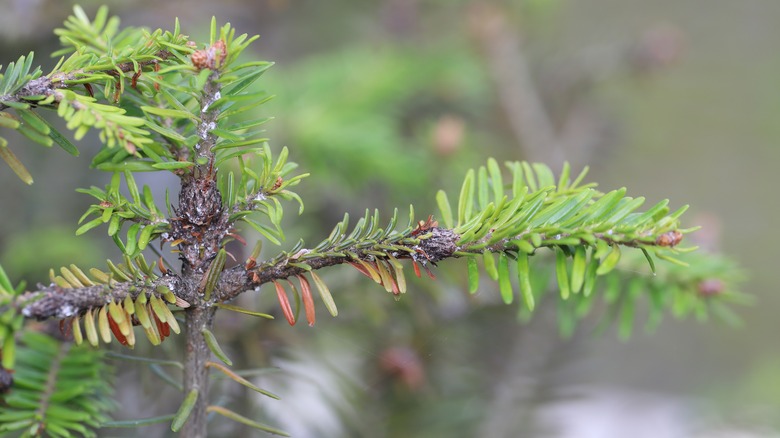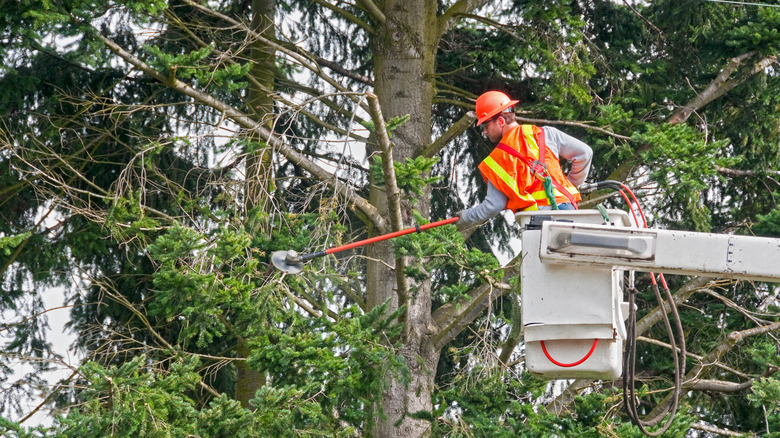The Best Time Of Year To Prune The Douglas Fir Tree In Your Yard
Your evergreen trees may seem like the easiest of all trees to maintain. They don't seem to need a lot of fertilizing and grow pretty well in most environments. That includes the Douglas fir (Pseudotsuga menziesii). This towering tree has much to offer any backyard space or large property and is one of the best cut evergreens to include in your outdoor displays during winter months, but it does require pruning from time to time to keep it growing in the right direction and healthy long term. The best time to tackle this problem is during the dormant period when the tree isn't actively growing and can handle the pruning process. For many areas, that's in the early spring.
Why should you prune a Douglas fir? There are several key benefits to doing so — most importantly, size and growth control. Pruning these firs allows you to remove any damage caused by fungal or insect infestation, as well, which is a common problem for these trees. At the same time, you don't want to remove too many of the tree's branches since that can limit its ability to thrive. Getting the right level of pruning down is important, as is when you actually head out to do the work.
Prune a Douglas fir in early spring
Always check with the specific species before making any significant changes to a Douglas fir (or any tree). Most of the time, you should prune this tree when it enters its dormant phase. This is typically after the late winter months, in early spring before the tree begins to bud. These trees typically enter a semi-dormant phase during the mid-summer months, when they're not necessarily rapidly growing. It's okay to prune during this time, too, though it's not ideal if it can be avoided.
You may also need to prune a Douglas fir due to diseased branches or areas where branches are weakened. You should use this time to prune for shaping. However, these trees don't need much more than that. It's possible to trim away too much of these trees, causing damage to them. In that way, be limited in terms of how much you cut and ensure you prune your trees the right way.
Strategies for effective Douglas fir pruning
There are a few things to know about pruning Douglas fir trees properly. Specifically, avoid removing the lowest branches on these trees. This significantly alters the shape of the tree, and you don't want to damage the actual main trunk. This will likely be too much for the tree to recover from, leading to the potential onset of disease or death. You also don't want to top evergreen trees, as doing so makes the tree vulnerable to disease and infestations.
Side branches should be no more than half the diameter of the tree's trunk. Pruning branches that are too large enhances the tree's ability to survive, as it should only have one dominant trunk. Remove any branches that are large enough to compete with the main trunk. If the trunk is damaged or several begin to grow, select a new main trunk to be dominant and cut the others back. Once the green is gone from those areas, it's not likely to grow back.
Branches should be cut close to the trunk just outside of the branch collar to support growth. The branch collar is the larger area that connects the limb to the trunk. If your tree seems to be struggling, decaying, or not growing after pruning, seek the help of an arborist or tree specialist. Don't let these trees languish or try to take them down yourself as they can topple easily when improperly cut.


